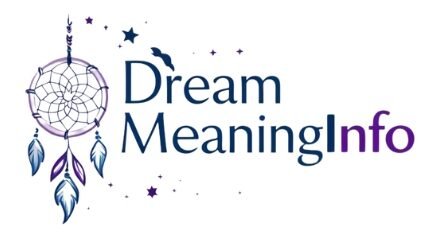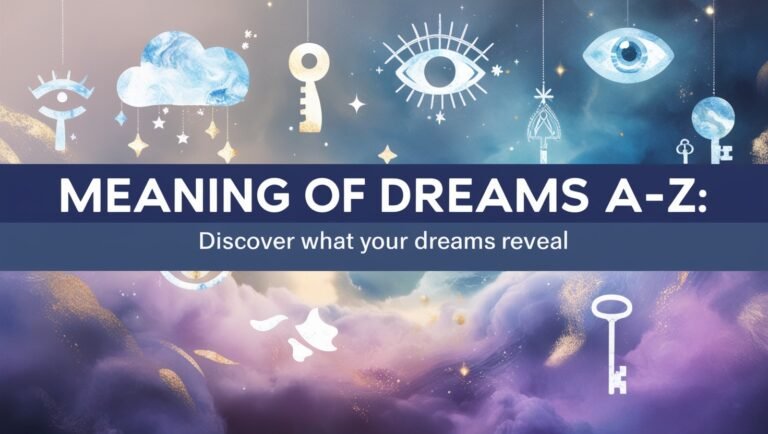Dream Catcher Meaning – Origins, Symbolism, and Modern Use

Dream catchers hold a special place in Native American culture. They have a deep history and spiritual meaning. The Ojibwe tribe first made these willow hoops with web-like patterns.
They were meant to protect children from bad spirits and nightmares. Now, dream catchers symbolize unity among indigenous groups. They show the bond between people, nature, and the spiritual world.
As dream catchers spread to other Native American tribes, they faced challenges. Cultural appropriation and commercialization have been issues. Despite this, dream catchers remain important in many indigenous traditions.
But, their mass production by non-Native groups has sometimes lost their original meaning. This has caused a gap from the designs, materials, and sacred meanings.
Traditional Origins in Ojibwe Culture
The dream catcher is a cherished symbol in Native American spirituality, rooted in the Ojibwe tribe. The Spider Woman, known as Asibikaashi, was the tribe’s first protector. She watched over infants and adults as the Ojibwe people moved across North America.
Asibikaashi’s care grew to include all children. Ojibwe women started making protective charms. They used willow hoops and sinew to weave these charms.
The Role of Spider Woman Asibikaashi
Asibikaashi, the Spider Woman, was deeply respected for her protection of the Ojibwe tribe. She wove webs to catch bad dreams, letting only good dreams through to children. These charms, or dream catchers, were placed above beds to keep out evil spirits and nightmares.
Early Crafting Methods and Materials
The traditional dream catcher was a simple yet powerful creation. Ojibwe women chose willow hoops and sinew to make the web patterns. These natural materials were chosen with great respect, linking the tribe to their land and traditions.
Sacred Protection for Children
- Dream catchers were traditionally hung above the cribs and beds of Ojibwe children to shield them from bad dreams and harmful spirits.
- The web-like design was believed to trap the bad dreams, allowing only the good ones to pass through and reach the sleeping child.
- This sacred practice was passed down through generations, ensuring the youngest members of the tribe were safeguarded by the protective powers of the dream catcher.
Dream Catcher Meaning – Origins, Symbolism, and Modern Use
Dream catchers have deep spiritual meaning in Ojibwe culture. They go back to ancient traditions. The circular shape symbolizes the earth, and the web catches bad dreams at night.
Feathers on the hoop are like ladders. They let good dreams reach the sleeper. This way, dream catchers keep our dreams safe and meaningful.
In today’s world, dream catchers symbolize Native American identity and unity. They have spread to many Indigenous communities. Each tribe adds its own twist to the dream catcher’s design.
But, there’s a worry about dream catchers being made and sold by non-Natives. This could lessen their sacred value. It’s important to respect their cultural roots.
| Traditional Symbolism | Modern Representation |
|---|---|
| Circular hoop represents the earth’s spherical nature Web captures bad dreams and allows good dreams to pass through Feathers act as ladders for good dreams to descend | Symbol of Native American heritage and cultural identity Unifying element across diverse Indigenous communities Concerns about cultural appropriation when commercialized |
Dream catchers hold a special place in our culture and lives today. They remind us of our heritage and the importance of respecting tradition. As we move forward, let’s keep their spiritual and symbolic value alive.
Sacred Elements of Dream Catcher Design
The dreamcatcher is a cherished symbol from Native American culture. It’s filled with deep meaning in every detail. From the willow hoop to the web, each part has a special significance. They tell a story of protection, connection, and the cycle of life.
The Significance of the Willow Hoop
The willow hoop is at the dreamcatcher’s core. It symbolizes the circle of life for the Ojibwe people. This shape shows how everything is connected, reminding us that life is a never-ending journey.
Web Pattern Symbolism
The dreamcatcher’s web pattern is inspired by spiders. It’s meant to catch bad dreams. According to legend, the Ojibwe’s Spider Woman created the first dreamcatchers to keep children safe from nightmares.
Meaning Behind Feathers and Beads
Feathers on the dreamcatcher help good dreams reach the sleeper. They connect the physical and spiritual worlds, letting positive energies flow. Beads often symbolize the spider or the bad dreams caught by the dreamcatcher.
Modern dreamcatchers may also have gemstones and arrowheads. These add more symbolism, like strength, protection, and a connection to nature.
| Design Element | Symbolic Meaning |
|---|---|
| Willow Hoop | Circle of life |
| Web Pattern | Protection from bad dreams |
| Feathers | Ladder for good dreams |
| Beads | Captured bad dreams, spider symbolism |
| Gemstones | Strength, protection, connection to nature |
| Arrowheads | Protection from misfortune |
Native American Cultural Significance
In many Native American cultures, dreams are very important. They are seen as messages from spirits. These messages help people understand themselves and guide the community.
Dreams are shared and interpreted to build and educate the community. They reflect not just the individual’s life but also the lives of their ancestors. This shows how everything is connected in Native American philosophy.
The indigenous identity and spiritual beliefs of Native American tribes are closely linked to dream interpretation. Dreams act as a bridge to dream interpretation, connecting people with their ancestral wisdom and the spiritual world. This deep connection to dreams is key to Native American culture, shaping their worldview and daily practices.
The dream catcher is a symbol of this spiritual belief. It was made by women using natural materials like feathers, beads, and fibers. Dream catchers were hung above newborns and children’s beds to protect them from bad dreams.
- The circle shape of the dream catcher represents the circle of life and the journey of the sun and moon.
- Feathers in dream catchers allow beautiful dreams to reach the sleeper while bad dreams are trapped in the web.
- Different tribes have varying interpretations of the symbolism of dream catcher components like beads.
Dream catchers hold more than just physical significance. They symbolize the strong bond between indigenous identity, spiritual beliefs, and dream interpretation in Native American traditions.
The Spread Across Indigenous Communities
The dream catcher, a symbol from the Ojibwe culture, has spread to many Native American groups. This happened because of the pan-Indian movement in the 1960s and 1970s. Dream catchers became a symbol of unity and identity for indigenous people.
Pan-Indian Movement Impact
The pan-Indian movement was a time of activism and cultural rebirth. It made dream catchers a symbol of shared heritage and strength. This movement boosted pride and unity among Native American tribes, leading to more dream catchers being made and shared.
Inter-tribal Trading and Adoption
Inter-tribal trade and cultural exchange helped dream catchers reach beyond the Ojibwe. As tribes traded goods and ideas, dream catcher designs and meanings spread. This led to different versions of dream catchers, each showing the unique style and beliefs of the adopting tribes.
While the pan-Indian movement and trade were key in spreading dream catchers, this also led to changes. Dream catchers became a popular “Native craft,” and their designs and meanings evolved. Sometimes, they strayed from the sacred Ojibwe traditions.
Dream Interpretation in Native Traditions
In many Native American spiritualities, dreams are key. They act as messengers from the spirit world. These visions guide, predict, and reveal our true selves. Sharing and understanding dreams is vital in many indigenous cultures.
The Lakota tribe sees dream catchers as catching good dreams, not bad ones. This shows how different beliefs are around these symbols. Dreams are seen as sacred messages, opening a door to the spiritual and our inner selves.
Dream analysis is deeply connected to Native American traditions. It shows how the spiritual and physical worlds are linked. By understanding dream symbols, people can learn more about their native american spirituality. They can uncover hidden truths and connect with their tribal customs.
This ancient dream analysis tradition is a big part of many indigenous communities. It shows a deep respect for the subconscious mind and the power of dreams.
Authentic Craftsmanship and Materials
Traditional dream catchers are made with deep respect for nature and old ways. Skilled artisans create these pieces, showing the lasting impact of indigenous cultures. The hoop is often made from willow branches, chosen for their flexibility and spiritual value.
The web, made from sinew or plant cord, is more than just pretty. It symbolizes the connection between everything.
Traditional Construction Methods
Making a dream catcher is a ritual filled with purpose. Artisans pick feathers from important birds and attach them carefully. They also use beads, stones, and other natural items, each with its own meaning.
This careful work makes every dream catcher unique. It shows the maker’s skill and their connection to their ancestors.
Sacred Natural Components
- Willow hoops: Representing strength, flexibility, and the cyclical nature of life.
- Natural fibers: Sinew, plant-based cordage, and other organic materials woven into the web.
- Feathers: Carefully chosen from birds of spiritual significance, such as eagles and hawks.
- Beads and stones: Incorporated for their symbolic meanings and visual appeal.
Making an authentic dream catcher is a sacred act. Each step is filled with intention and respect for nature. This way, artisans keep the dream catcher’s power alive, showing its importance in culture and spirit.
Cultural Preservation vs. Commercialization
Dream catchers have become very popular, but this has raised concerns about cultural appropriation and commercialization. Many mass-produced dream catchers lack the spiritual meaning and skill of authentic ones. Native American artisans and cultural supporters urge people to buy dream catchers from indigenous creators. This helps support their communities and keeps traditional crafting alive.
The question remains on how to share cultures while respecting sacred traditions and supporting Native American artisans. Dream catchers, once rooted in Native American culture, have gained worldwide fame. It’s essential to adopt a thoughtful and respectful way to appreciate dream catchers, even as they become more commercial.
Companies are now thinking twice about their content to avoid cultural appropriation. Selling dream catchers as products can make Native American culture seem romanticized and disrespected. By learning about the dream catcher’s true meaning to Native American communities, we can ensure it’s valued and honored correctly.






